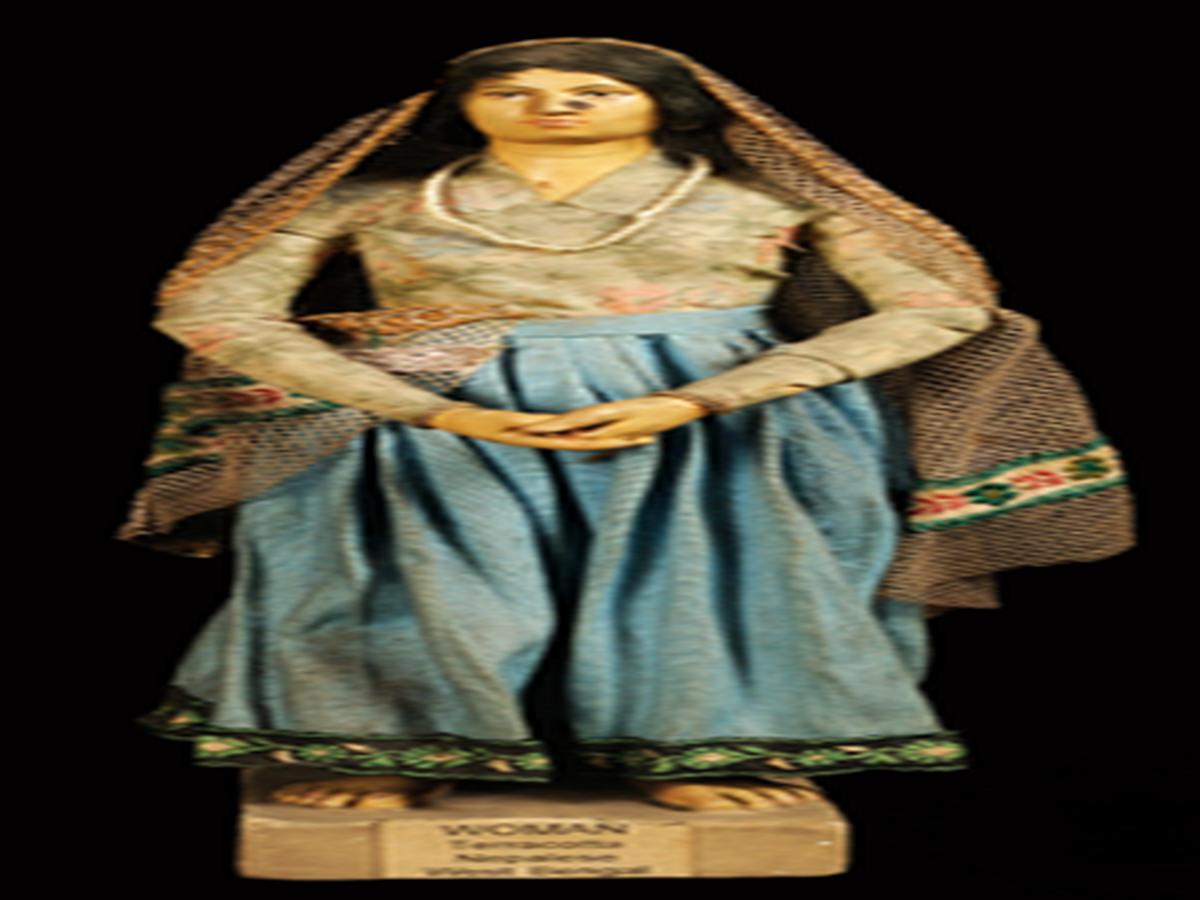State
Tribe Name
Art Type
short description
Terracotta works created by the artisans of the Naga tribe represent a male figure of Nepal standing in an upright position on a squarish-shaped pedestal. This image is made from baked clay with a durability that symbolizes the history of terracotta making in northeastern tribal areas of India. The figure dons a black head gear which is a typical Nepalese-style hat indicative of cultural identity and ethnic heritage. The white paint on his clothes represents simplicity and elegance of the Nepali traditional attire, which most probably would be done up into daura-suruwal or some regional equivalent. The semi-formal black-painted shoes appear to be ceremonial or regular wear of the settled hill communities.
Thumbnail

Filter Postion
Left
Filter Background
Off
Theme
Filter Header Image

content
Image

description
Terracotta works created by the artisans of the Naga tribe represent a male figure of Nepal standing in an upright position on a squarish-shaped pedestal. This image is made from baked clay with a durability that symbolizes the history of terracotta making in northeastern tribal areas of India. The figure dons a black head gear which is a typical Nepalese-style hat indicative of cultural identity and ethnic heritage. The white paint on his clothes represents simplicity and elegance of the Nepali traditional attire, which most probably would be done up into daura-suruwal or some regional equivalent. The semi-formal black-painted shoes appear to be ceremonial or regular wear of the settled hill communities.
Though the image depicts a man from Nepal, the fact that it was sculpted by an artisan in the Naga tribe also showcases a cultural narrative about the history of interactions within a rich interlacing story called the Northeast Frontier, where specific tribes like the Nagas usually partake in diversified ethnic craftsmanship. Cross-cultural representation through terracotta statues may enable a much wider understanding-from ethnographic display to educational tools, and even beautiful materials for upholding the aesthetic representation of traditional outfits and of ways of life.
Though the image depicts a man from Nepal, the fact that it was sculpted by an artisan in the Naga tribe also showcases a cultural narrative about the history of interactions within a rich interlacing story called the Northeast Frontier, where specific tribes like the Nagas usually partake in diversified ethnic craftsmanship. Cross-cultural representation through terracotta statues may enable a much wider understanding-from ethnographic display to educational tools, and even beautiful materials for upholding the aesthetic representation of traditional outfits and of ways of life.
Image Mode
landscape
promoted
On
Verified
Off
